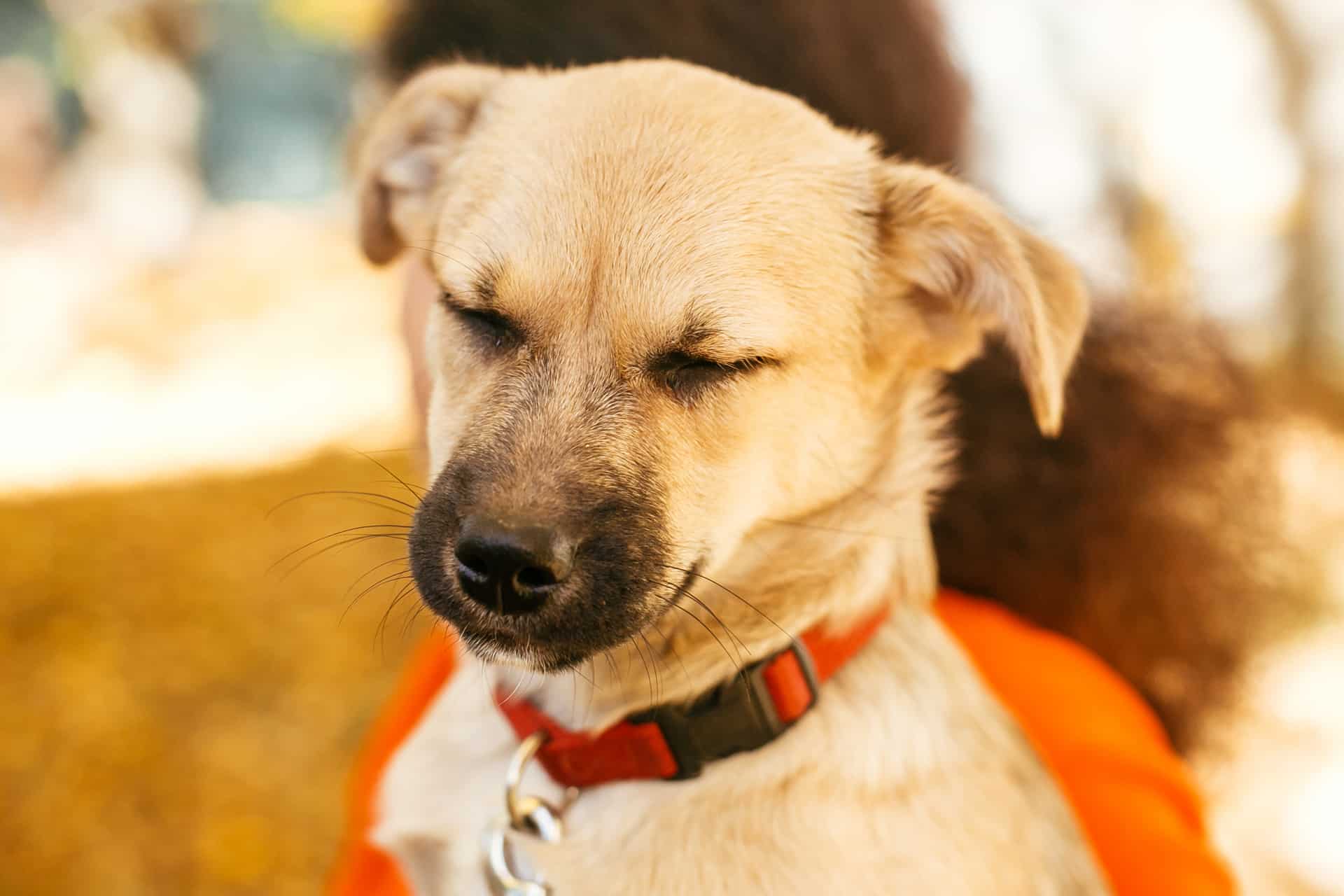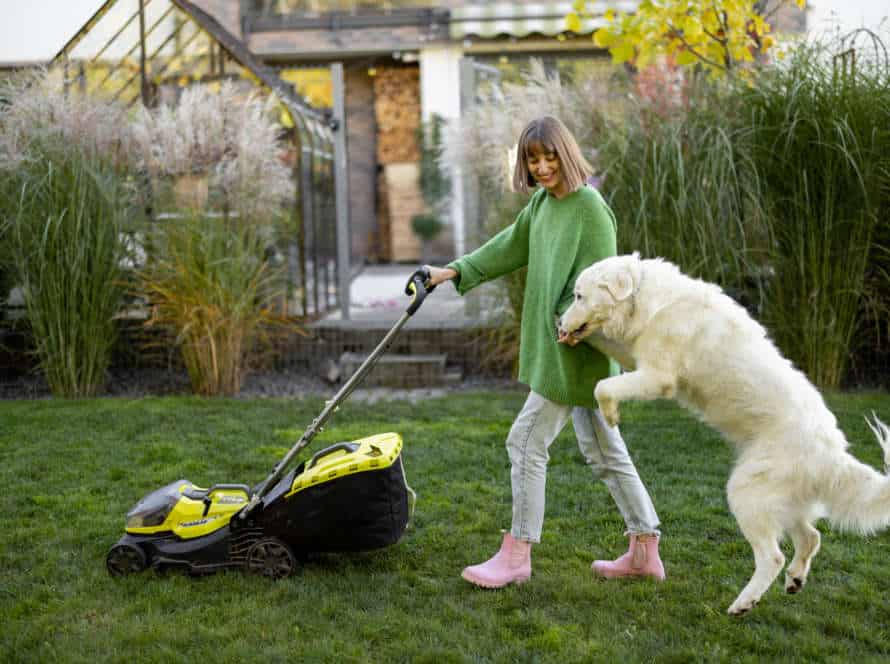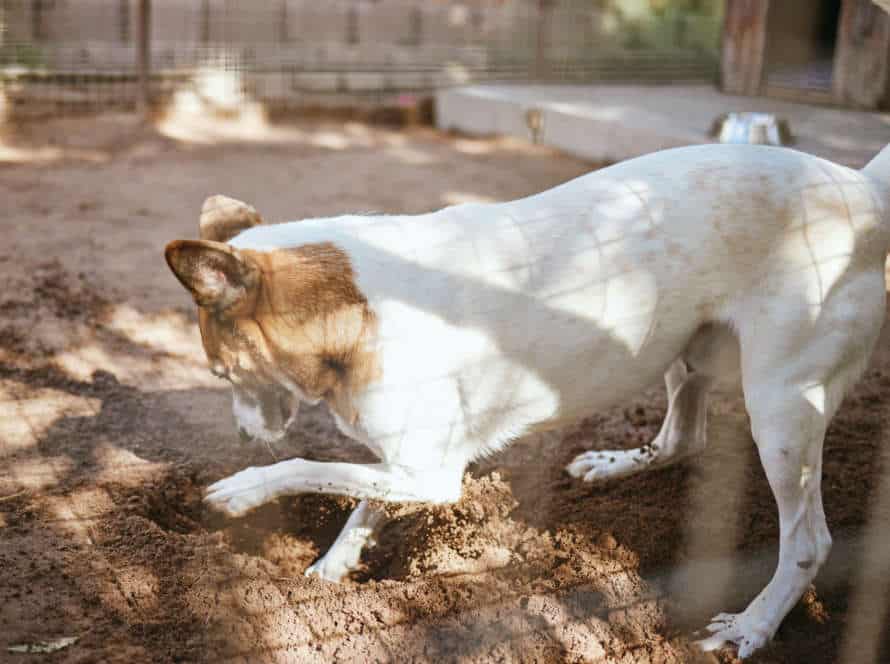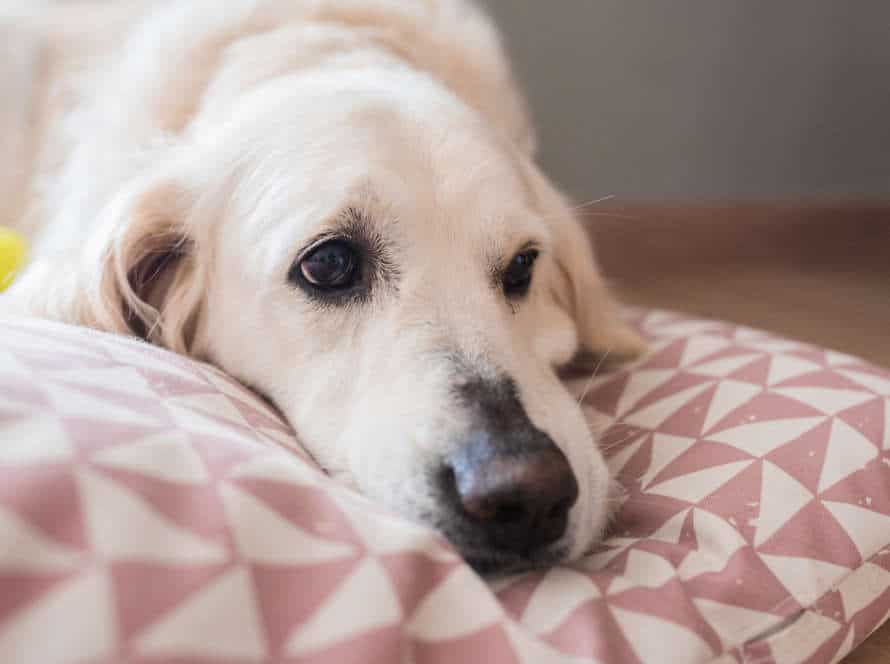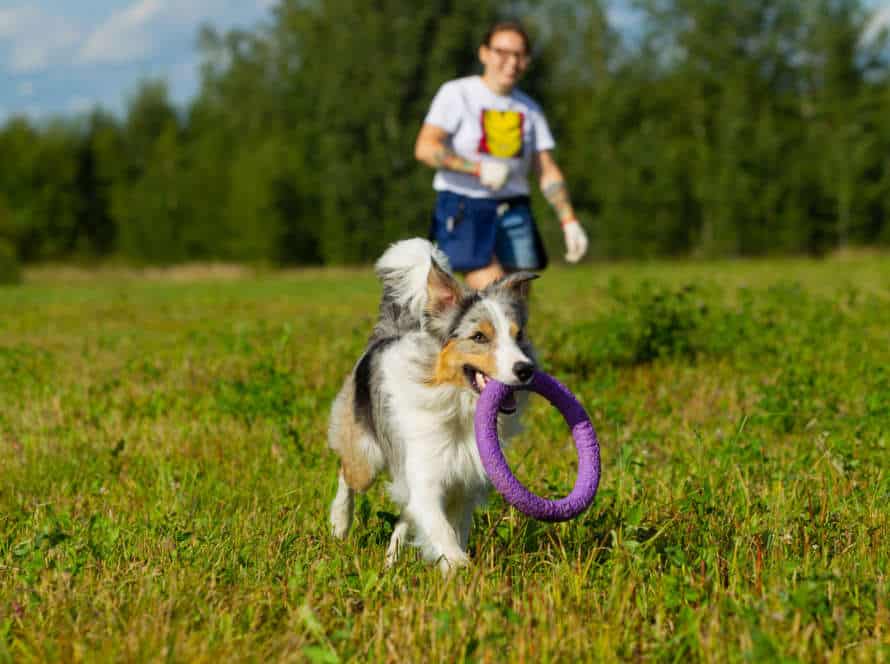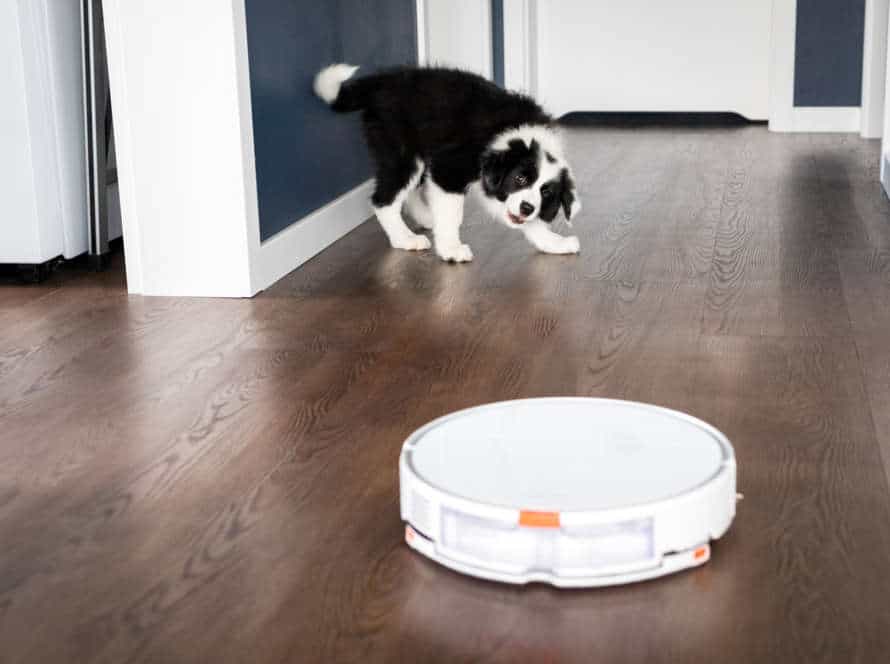Understanding Fear-Based Aggression
Fear-based aggression is a mix of fear, pain, and aggression. It is a type of defense. It is seen in both humans and animals. In this article, we will discuss how to recognize it, stop it, and help your pet become confident again.
Definition of fear-based aggression
Fear-based aggression is a type of aggressive behavior. Dogs may display it when they are afraid. This can be seen in the form of growling, barking, snapping, or biting. It can be triggered by loud noises, unfamiliar people, or other dogs.
It is essential to understand fear-based aggression to help prevent and manage it. Building confidence in dogs is an effective way to do this. Socialization, positive reinforcement training, and a consistent and predictable environment are all helpful.
Pet owners should pay attention to their pet’s behavior. If triggers causing fear-based aggression are identified, a professional trainer can help.
Causes of fear-based aggression in dogs
Fear-based aggression in dogs can be caused by multiple factors. A dog who feels threatened may react defensively if they’re scared or uncertain.
Common causes of fear-based aggression include:
- Poor socialization. Dogs who haven’t been exposed to different people or situations may struggle to adjust.
- Traumatic experiences. Abuse or violence can cause lasting fear and anxiety in dogs.
- Medical conditions. Pain or discomfort may provoke aggression as a defense.
- Genetics. Certain breeds are more prone to fear-based aggression.
To prevent fear-based aggression in dogs, socialize them, use positive reinforcement training and keep their environment calm and consistent. If you observe aggression in your pet, consult a professional trainer or behaviorist.
Identifying the signs & body language of fear-based aggression
Fear-based aggression in dogs is caused by anxiety, stress and a lack of confidence. It’s important to be aware of the signs. Ears may be pinned back, tail between legs, panting, drooling or yawning. Also, cowering, backing away, growling/barking, raised hackles, avoidance and hiding.
To prevent it becoming worse, work on building your dog’s confidence with positive reinforcement, socialization and exercise. Get help from a professional to create a plan for addressing the fear. Pro Tip: Talk to an expert!
Ways to Build Confidence in Dogs
Building confidence in dogs is key for preventing fearful behavior. If a pup lacks the self-assurance, they may act aggressively when scared. Thankfully, there are several strategies to help boost their confidence and teach them to engage with the world around them. In this article, we’ll take a look at the best methods to build up your pup’s self-esteem.
Create a structured routine for your dog
Structuring a daily routine for your pup is a great way to build their self-assurance and stop fear-based aggression. Dogs enjoy a predictable situation with a routine, and understanding what will happen helps reduce worry and create trust. Here are some tips to make that routine:
- Feeding, exercising, playing, and resting should all have a daily schedule. This helps your dog comprehend what each day holds.
- When talking to your pup, use the same commands and cues regularly. This establishes a clear and predictable communications system.
- Consistency is essential when training. Have small coaching sessions every day to structure your pup’s routine and conduct.
- Give them chances to get to know other people and animals, and experience new things. This encourages your dog to gain courage and overcome any fears.
By setting up a structured routine for your pup, you’ll have a happy, secure, and well-behaved companion.
Proper Socialization
Socializing your pup is essential for stopping fear-based aggression and giving them self-assurance. Here’s how to do it right:
- Begin early: Show your pup to people, places and happenings as soon as possible.
- Take it slow: Gradually introduce your pup to new scenarios, and give them time to adjust.
- Encourage them positively: Give your pup rewards when they display good behavior and relaxed reactions to things they don’t know.
- Observe their body language: Monitor your pup’s body language and if they look anxious or scared, take them away from the situation.
- Keep socializing: Ongoing socialization is necessary to avoid fear-based aggression and keep up your pup’s confidence.
Every pup is different, so tactics may vary based on breed, nature and individual experiences. If needed, ask for advice from an expert trainer or behaviourist.
Obedience Training
Obedience training is crucial for building confidence in dogs and avoiding fear-based aggression. It not only helps your pup follow commands, but it also strengthens the bond between you and your pup. Here are some tips to increase your pup’s confidence through obedience training:
- Begin with simple commands like ‘Sit’, ‘Stay’, ‘Come’, and ‘Heel’.
- Consistency is essential when training; use positive reinforcement like treats, compliments, and love.
- Gradually increase difficulty level by training in different environments and scenarios. This will help your pup become accustomed to different situations and increase their confidence.
- Mix up training by using toys, agility courses, scent work, or get help from a professional trainer.
- Be sure to provide a safe, consistent, and supportive environment for your pup to build trust and learn new skills.
Pro Tip- Start with basic obedience training combined with frequent positive reinforcement, then gradually increase operations in different places or with different goals.
Exercise & Enrichment
Exercise and enrichment are essential for a confident pup. Here’s how to boost their self-esteem:
- Exercise daily – Walks, runs, and playtime help reduce stress and boredom.
- Stimulate their mind – Puzzles, training, and interactive toys are great for problem-solving skills.
- Socialize – Introduce them to new people, places, and experiences in a positive way.
- Train obedience – Building trust and confidence, while reducing anxiety.
By incorporating these activities, your pup will be healthy, happy, and confident, and fear-based aggression can be avoided.
Desensitization & Counter-conditioning
Desensitization and counter-conditioning can boost your dog’s confidence and reduce fear-based aggression.
Desensitization involves showing your pup the trigger that causes fear or aggression, starting from a low level. Step-by-step increase the exposure. For instance, if your doggy is scared of other dogs, start by showing them a picture of a canine and reward for staying chill. Over time, you can take your pup for a walk near other dogs and reward them for staying calm.
Counter-conditioning changes your dog’s emotions from fear or aggression to a positive feeling. To do this, pair the presence of the trigger (e.g. other canines) with treats and toys your pup loves.
Eventually, your pup will associate the trigger with good vibes and won’t feel scared or aggressive.
These techniques take time and patience. However, with consistent training, your pup will feel more confident in various scenarios.
Working with Fearful Dogs
Fear-based aggression in dogs can be a major problem. It affects safety and behaviour. To tackle it, we need to understand their triggers and build trust. Positive reinforcement is key. Let’s discuss how to understand and manage fear-based aggression in dogs.
Seek Professional Help
Working with scared pooches can be tricky. It’s often best to get professional help to avoid fear-based aggression and increase your pup’s self-assurance. Here are times when you should consider seeking help:
- If your dog has shown aggression towards people or other animals.
- If your pup’s fear is affecting their quality of life or keeping them from usual activities.
- If you don’t know how to manage your pup’s fear or aggression safely and properly.
A qualified dog trainer or behaviorist can help you find the root of your dog’s fear and make a tailored plan to meet their needs. With time, persistence, and the correct strategy, your frightened dog can learn to get over their fear and live a more content, confident life.
Techniques for working with fearful dogs
Working with fearful dogs? It can be tough. But there are methods to help them gain confidence and avoid fear-based aggression. Here are a few tactics:
- Create a safe spot in your home. A place where they can go when anxious or overwhelmed.
- Reward them for calm and confident behaviour. Don’t punish them.
- Socialize your dog. In a structured, gradual way. Introduce them to people, animals, and new surroundings.
- Seek professional help if needed. A dog trainer, vet, or behaviorist might help.
It takes time, patience, and consistency. With the right techniques, your dog can become more secure and confident.
Avoiding Punishment-Based Training
Punishment-based training can have a bad effect on fearful dogs. It can make them lose their confidence and even cause fear-based aggression. Dog owners and trainers should focus on strengthening the dog’s confidence instead. Here are some tips to help:
- Positive reinforcement: Reward desired behavior with treats and compliments, not punishment.
- Counter-conditioning: Introduce fearful dogs to their fear source gradually. Reward calm behavior to create positive associations.
- Desensitization: Expose the dog to their fear in a controlled and positive atmosphere. Increase exposure as their confidence grows.
Train with patience and understanding, instead of fear and punishment. This will create a strong bond between dog and owner. It will also reduce fear-based aggression and improve the dog’s quality of life.
Handling Aggressive Dogs
Aggressiveness in dogs usually happens due to a lack of self-assurance or fear. They experience the same feelings as humans, such as worry and insecurity, which causes them to act out. Fortunately, there are various techniques for owners to help their dogs become more self-confident and stop fear-based aggression.
In this article, we’ll look at some of the most successful methods for dealing with aggressive pups and fostering the self-confidence they need to stay relaxed and balanced.
Safety measures
If you come across a hostile canine while walking or running, taking safety measures can protect you from harm and bolster your confidence when facing similar situations in the future.
Here are some tips:
- Stay still, stay calm and avoid looking directly at the dog.
- If it’s barking or growling, step back slowly without turning your back or making abrupt movements.
- If it moves closer or attacks, use an object such as a stick, pepper spray, or water to distract it.
- If it knocks you down, curl up in a ball, cover your ears and neck, and remain still until it leaves.
- To gain trust in future aggressive dog encounters, practice the safety measures above and consider joining a local dog training class to learn more about canine behavior and body language.
How to de-escalate the situation
Encountering an aggressive pup? Stressful! Dangerous! Arm yourself with knowledge to de-escalate the situation. Tips:
- Stay calm. No direct eye contact.
- Speak firmly. Simple commands, e.g. “sit” or “stay”.
- No sudden moves – they might startle the pup.
- Back away slowly. Don’t turn your back.
- Loud and authoritative voice if pup continues aggression or attacks.
- Avoid aggressive dogs when possible. Seek professional help if needed.
Protecting yourself from aggressive dogs
Encountering an aggressive dog can be a scary and dangerous experience. But, there are ways to protect yourself. Follow these steps:
- Stay calm, don’t run or make noise.
- Stand still with hands at your sides, without making eye contact.
- Back away slowly and maintain a vertical posture, don’t turn your back.
- Use a steady, firm voice and give commands such as “stay” or “no“.
- Use an object like a stick or umbrella to defend yourself, if needed.
- Report aggressive dogs to animal control to prevent future incidents.
Pro Tip: To prevent surprise attacks, stay aware of your surroundings. Remain calm during the encounter to reduce the risk of escalating the situation.
Prevention is Key
Prevent fear-based aggression in your pup by boosting their self-esteem. Regular training and socialising are a must! Notice signs of fear early, and intervene before your pooch gets aggressive. Here are some tips to help prevent fear-based aggression:
Early Socialization For puppies
Early socialization is vital for puppies to become confident, well-adjusted dogs. It is the key to stopping fear-based aggression and other behavior issues.
Socialization is introducing puppies to a range of different people, animals, settings and experiences in a positive way. It helps them build trust, find solutions and understand their environment.
Here are some hints for early pup socialization:
- Introduce your pup to different humans, like men, women, children and of varied races and ages.
- Let your puppy connect with other dogs and animals, like cats, birds and farm animals like cows and horses.
- Expose your pup to diverse sounds and situations, such as thunderstorms, car rides and crowded places.
- Give your pup treats and compliments for good behavior.
- Consistency is needed. Make socialization part of your pup’s routine.
Pro tip: Socialization should happen as soon as possible and continue throughout your dog’s life to make sure they stay confident and well-adjusted.
Consistent, positive reinforcement-based training
Positive reinforcement-based training is a great way to stop fear-based aggression in dogs and to strengthen their confidence.
Here are some tips on how to use it when working with your pup:
- Reward your dog with treats, praising, and playtime when they show good behavior.
- Don’t use physical punishment, yelling, or anything else that may make your dog scared or anxious.
- Be consistent. Use the same commands and rewards each time.
- Start off small and progress slowly. Begin with easy commands like “sit” and “work your way up”.
- Train regularly, ideally every day, so your dog remembers their good behavior.
Consistent, positive reinforcement-based training can help stop fear-based aggression in your pup and create a great relationship between you and your pup.
Address any Behavioral Issues Early On
Fear-based aggression can be a big problem. It is important to deal with it early. Here are some steps to help:
- Recognise signs such as growling, snarling, and biting in your pet.
- Work out what triggers the fear and anxiety.
- Find an animal behaviourist and come up with a plan.
- Use positive reinforcement – reward good behaviour and avoid punishment.
This can help build confidence and prevent future aggression. Prevention is better than treatment.
Pro Tip: If you see any aggressive behaviour, get help right away.
Frequently Asked Questions
1. What is fear-based aggression?
Fear-based aggression is when a dog becomes aggressive because it is afraid. This can be triggered by a number of things, such as loud noises, unfamiliar people or dogs, or new environments. It is important to note that fear-based aggression is not the same as dominance-based aggression.
2. How can I build my dog’s confidence?
There are many ways to build your dog’s confidence, such as socialization, exercise, positive reinforcement training, and addressing any underlying medical or behavioral issues. It is important to work with a professional trainer or behaviorist to create a customized plan for your dog.
3. What are some signs that my dog is fearful or anxious?
Some signs that your dog may be fearful or anxious include trembling, panting, drooling, hiding or cowering, growling or snapping, and avoiding eye contact. If you notice any of these signs, it is important to provide your dog with a safe and quiet space.
4. Can fear-based aggression be cured?
Fear-based aggression can be managed and improved with proper training and socialization. However, it is important to understand that it may never be fully cured. It is important to work with a professional to create a realistic management plan for your dog.
5. Should I punish my dog for fear-based aggression?
No, punishing your dog for fear-based aggression will only make the problem worse. It is important to address the underlying cause of their fear and work on building their confidence through positive reinforcement training.
6. Can medication be helpful for fear-based aggression?
Yes, medication can sometimes be helpful in managing fear-based aggression. It is important to work with a veterinarian or veterinary behaviorist to determine the appropriate medication for your dog’s specific needs.

